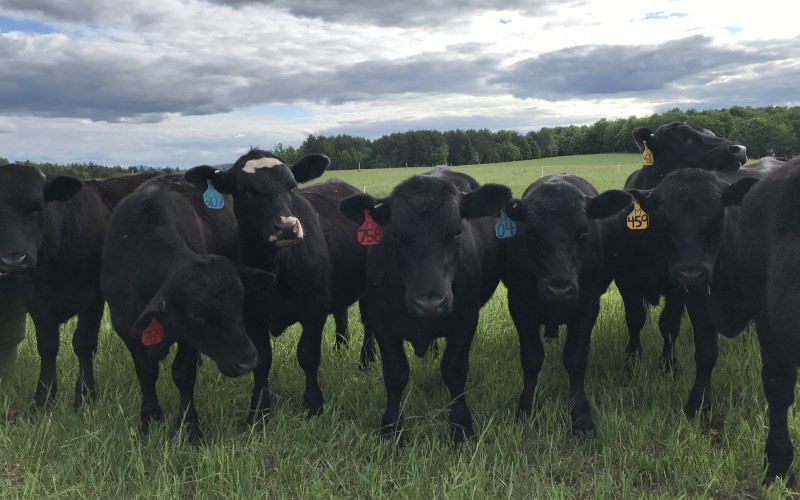Bagley Risk Management : Securing Your Company Future
Bagley Risk Management : Securing Your Company Future
Blog Article
Trick Variables to Consider When Choosing Livestock Risk Protection (LRP) Insurance Coverage
When reviewing options for Animals Threat Defense (LRP) insurance policy, numerous vital aspects call for cautious factor to consider to make sure efficient danger administration in the agricultural sector. Choosing the right coverage alternatives customized to your certain livestock operation is critical, as is understanding how exceptional prices associate with the level of protection supplied. In addition, the qualification requirements for different sorts of animals and the versatility of the policy to adjust to transforming scenarios are vital aspects to weigh. The performance and openness of the claims procedure can considerably impact the general experience and financial end results for livestock manufacturers. By tactically browsing these important elements, manufacturers can protect their financial investments and minimize prospective threats successfully.
Insurance Coverage Options
When thinking about Livestock Danger Protection (LRP) insurance, it is vital to comprehend the various coverage options readily available to minimize threats in the agricultural industry. Livestock Threat Defense (LRP) insurance policy supplies different protection options customized to fulfill the diverse needs of animals manufacturers.
One more vital insurance coverage choice is the endorsement duration, which establishes the length of time the coverage is in result. Manufacturers can choose the endorsement duration that best matches their manufacturing cycle and market conditions. In addition, protection levels and prices vary based upon the type of animals being insured, giving manufacturers the flexibility to tailor their insurance coverage intends according to their certain requirements.
Recognizing the various coverage alternatives available under Animals Risk Defense (LRP) insurance coverage is essential for manufacturers to make educated choices that successfully shield their livestock procedures from market uncertainties.
Costs Expenses

Animals Danger Protection (LRP) insurance provides essential insurance coverage choices tailored to mitigate threats in the farming industry, with a significant facet to take into consideration being the computation and structure of premium prices. These consist of the type and number of animals being guaranteed, the coverage degree selected, the current market rates, historical price information, and the length of the coverage duration.
Premium expenses for LRP insurance are commonly determined based on actuarial information and risk analysis designs. Insurers assess historic data on animals prices and manufacturing costs to establish a suitable costs that shows the degree of danger entailed. It is vital for livestock producers to carefully examine premium costs and protection alternatives to ensure they are adequately secured versus potential economic losses due to damaging market conditions or unanticipated occasions. By comprehending how premium expenses are computed and structured, producers can make enlightened decisions when choosing the ideal LRP insurance coverage for their procedure.
Eligible Animals
The determination of eligible livestock for Livestock Risk Protection (LRP) insurance coverage involves careful consideration of specific criteria and characteristics. Livestock types that are generally eligible for LRP insurance include feeder livestock, fed lambs, swine, and cattle. These animals must meet particular credentials connected to weight arrays, age, and meant use. Additionally, the eligibility of animals might vary based on the specific insurance policy copyright and the regards to the Web Site policy.
Feeder cattle, for instance, are frequently eligible for LRP insurance coverage if they fall within defined weight varieties. Fed livestock may also be qualified, but they must fulfill specific weight and quality grade needs. Swine eligible for protection usually consist of market weight animals meant for slaughter. Lambs are one more category of animals that can be considered for LRP insurance policy, with factors such as weight and age playing an essential duty in identifying their eligibility.
Prior to selecting LRP insurance coverage for animals, producers must carefully review the qualification standards detailed by the insurance service provider to guarantee their animals meet the necessary requirements for protection.
Policy Flexibility
Plan flexibility in Animals Danger Defense (LRP) insurance enables producers to tailor protection to match their details needs and risk management techniques. This versatility equips animals manufacturers to personalize their insurance coverage based upon factors such as the sort of animals they have, market problems, and private danger resistance degrees. One vital facet of policy versatility in LRP insurance is the capability to select insurance coverage degrees that straighten with the manufacturer's economic goals and run the risk of direct exposure. Manufacturers can pick insurance coverage degrees that review protect them versus possible losses as a result of changes in animals rates, ensuring they are properly guaranteed without overpaying for unnecessary coverage. Furthermore, LRP insurance policy offers versatility in policy duration, enabling producers to select protection periods that best fit their production cycles and marketing timelines. By offering personalized choices, LRP insurance coverage enables manufacturers to effectively handle their danger exposure while guarding their animals procedures against unexpected market volatility.
Cases Process
Upon experiencing a loss or damages, manufacturers can initiate the insurance claims process for their Animals Risk Security (LRP) insurance by immediately calling their insurance copyright. It is essential for manufacturers to report the loss asap to expedite the insurance claims procedure. When connecting to the insurance coverage supplier, manufacturers will need to important site provide in-depth details concerning the event, consisting of the day, nature of the loss, and any kind of relevant paperwork such as vet records or market costs.

After the evaluation is full, the insurance coverage provider will make a choice concerning the case and communicate the result to the manufacturer. The manufacturer will get settlement according to the terms of their Animals Risk Security (LRP) insurance coverage policy if the insurance claim is accepted. It is essential for producers to be acquainted with the insurance claims procedure to ensure a smooth experience in case of a loss

Verdict
Finally, when picking Animals Danger Security (LRP) insurance coverage, it is important to think about protection options, premium costs, qualified animals, policy versatility, and the insurance claims process. These vital variables will certainly aid make sure that farmers and herdsmans are sufficiently safeguarded against possible dangers and losses connected with their livestock procedures. Making a notified decision based upon these factors to consider can eventually result in better economic safety and assurance for livestock producers.
Animals Risk Defense (LRP) insurance coverage offers different coverage alternatives customized to satisfy the diverse needs of animals producers.The determination of eligible animals for Livestock Risk Protection (LRP) insurance policy protection entails cautious consideration of particular standards and qualities.Plan versatility in Animals Risk Defense (LRP) insurance permits producers to customize coverage to fit their details requirements and take the chance of administration strategies.Upon experiencing a loss or damages, manufacturers can start the cases process for their Livestock Threat Defense (LRP) insurance by immediately calling their insurance service provider.In final thought, when choosing Animals Risk Protection (LRP) insurance policy, it is important to think about insurance coverage options, premium costs, eligible animals, plan flexibility, and the claims process.
Report this page